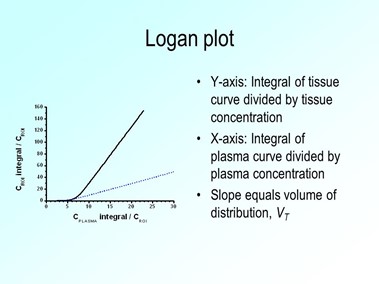Minocycline and Brain Trauma
AbdulSamad Olagunju / July 24, 2021
6 min read
Welcome to another blog post! If you want to see the link to the article immediately: Direct Link to the Paper
Quote of the Post:
"Pride defeats its own end, by bringing the man who seeks esteem and reverence into contempt." - Henry St. John Bolingbroke
Today, we go over an article named:
“Minocycline reduces chronic microglial activation after brain trauma but increases neurodegeneration.”
I wanted to read a research article about microglia, so I searched up microglia on PubMed. This article caught my eye so let’s get into it.
Let’s see what we already know about this article from reading the title. Yeah, I know, the title is a mouthful. Yet, reading it I learn that this research will involve taking a bunch of patients who had brain trauma, and giving them some chemical called minocycline. Let’s get a picture of minocycline while we’re at it):

- Wikipedia pic of minocycline.
My guess? Minocycline stops microglia from getting super-activated in the brain, but it still somehow contributes to neurodegeneration. My guess is that minocycline is like a double-edged sword.
Let’s actually begin to read the article. In the introduction, the researchers talk about how bad brain trauma is, and how it becomes more progressive over time. Survivors of brain trauma tend to face many terrible diseases (like Alzheimer’s disease). In their brains, their white matter tracts (axons that are myelinated) fall apart due to the release of destructive enzymes and chemicals by microglia.
An Important Point to Keep In Mind
Another important caveat the writers state is that: “In rodent TBI models, microglia [are]…predominantly pro-inflammatory…However, studies in non-human primates in the chronic phase suggest a reparative role.”
This tells me we have to careful about any conclusions we come up with about this study. Chronic microglia activation may repair axons or destroy them.

The Experiment
The researchers tell us that they use PET ligand imaging (hopefully will write an article about this when I understand it) to measure whether the microglia are super activated.
They also tell us that minocycline is an anti-inflammatory drug that can inhibit microglial activation in models of traumatic brain injury. Their hypotheses (kind of obvious from the title): lots of microglial activation leads to your brain falling apart, and that people who suffer traumatic brain injury can be helped by minocycline because it will reduce the number of activated microglia in the brain.
Let’s take a look at how the researchers designed this study. They used a randomized open-label trial? Let’s find out what that means. In a randomized open-label trial, patients know which treatment they are given but they are randomly separated into treatment groups. Seems fine to me. I would want to know if I am getting some kind of experimental drug, and you probably would too.
This study was performed in the UK, and it had a pretty small sample size. There were fifteen subjects in this study (excluding the controls). All had suffered traumatic brain injury. Ten patients received minocycline twice a day and the other five received no minocycline.
I feel like it would be difficult to find subjects for this study. How many people would join this study?
It must be difficult for researchers to carry out these experiments, especially when they say that in order for patients to participate in the trial:
- they can’t take any drugs of any kind,
- have any problems prior to the traumatic brain injury,
- they need to be healthy enough for PET scans, MRI scans, and insertions into their arteries to measure what’s going on in their blood.
I feel like you should get paid as a patient for this stuff, otherwise why would you go through all the work of going to the clinic and following these guidelines?
Another thing. Did these patients receive brain surgery after their traumatic brain injury? The researchers haven’t discussed this yet, but I feel when you open somebody’s head, introducing different things past the blood brain barrier (and cutting through different parts of the brain), you may get atypical results from experiments you perform using them as test subjects.
Anyway, the researchers were thorough, even performing genetic tests so that the enzymes in their patients wouldn’t disturb the readings of their PET scans. Unfortunately, I feel like this study is hurt by the limited number of human subjects. Trying to work with other hospitals globally would bring more insight, but I can see it would be very difficult to organize that.
The Statistical Tools
The Logan graphical method was used to analyze the PET scan findings.

- (here’s the link to the pic: https://slideplayer.com/slide/5169006/)
The math behind this (that I saw on Wikipedia) looked way too complicated for me. It’s just a way to measure how the tracer for the PET scan moves through the tissue of the patient.
MRI data was collected for white matter and grey matter tracts, and volumes for brain regions were calculated. Differences in brain tissue structure were calculated using voxel-based morphometry. In this method, t-tests are performed on brain images of different people. What does this reveal? Using this technology, you can identify the differences in brain structure for a group of patients. More on that here: Voxel-Based Morphometry
More t-tests were performed to find out whether differences in the subjects were due to age, gender, or the presence of the gene that produced the molecule that binds to the PET scan tracer.
A lot of the information is too complicated for me currently in the PET analysis, MRI analysis, and Statistical analysis section. We’ll do a deeper dive into these things later. Some questions though that I will hopefully have answers to soon:
- What is a distribution volume ratio?
- What is a pseudo-reference region?
- What is a diffeomorphic non-linear registration?
- What is automated volumetric segmentation?
- What is cross-sectional voxel-based morphometry?
- What is an unbiased within-subject pairwise longitudinal registration approach?
- What is the normalization of tensor images?
- What are Mann-Whitney U-tests?
- What are non-parametric permutation tests?
- What are Z maps?
- What are Bonferroni Corrections?
Now we will talk about the results.

What does minocycline really do? Find out on my next blog post.
Thanks for reading!
Links
